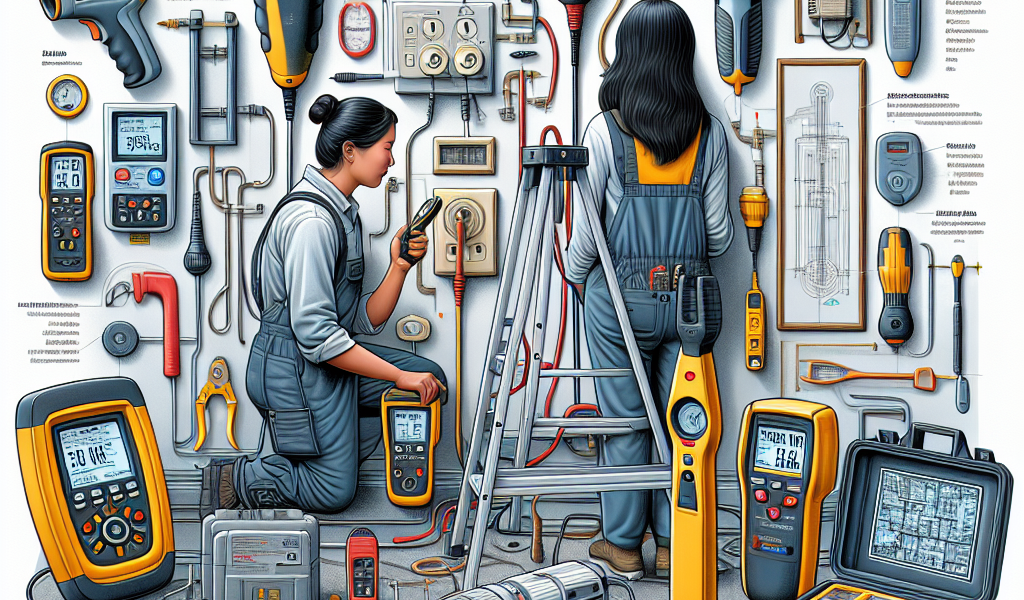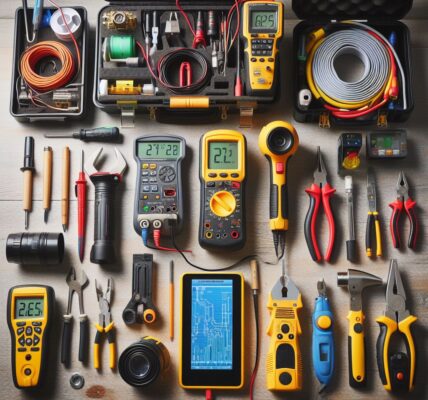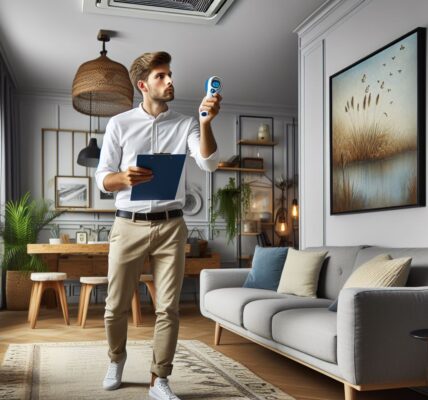What is The essential companion for accurate property assessments ?
Inspection Instruments: A Guide for Property Assessments is a comprehensive resource designed to assist property assessors and inspectors in conducting thorough evaluations of buildings and properties. This guide provides essential information on various inspection instruments used during assessments, empowering professionals to identify potential issues, determine property value accurately, and ensure compliance with safety regulations. From basic tools like measuring tapes to advanced equipment such as thermal cameras or moisture meters, this guide covers a wide range of inspection instruments, their purpose, and best practices for utilizing them effectively. With this knowledge at hand, property assessors can confidently evaluate properties with precision and make informed decisions regarding maintenance requirements or real estate transactions.
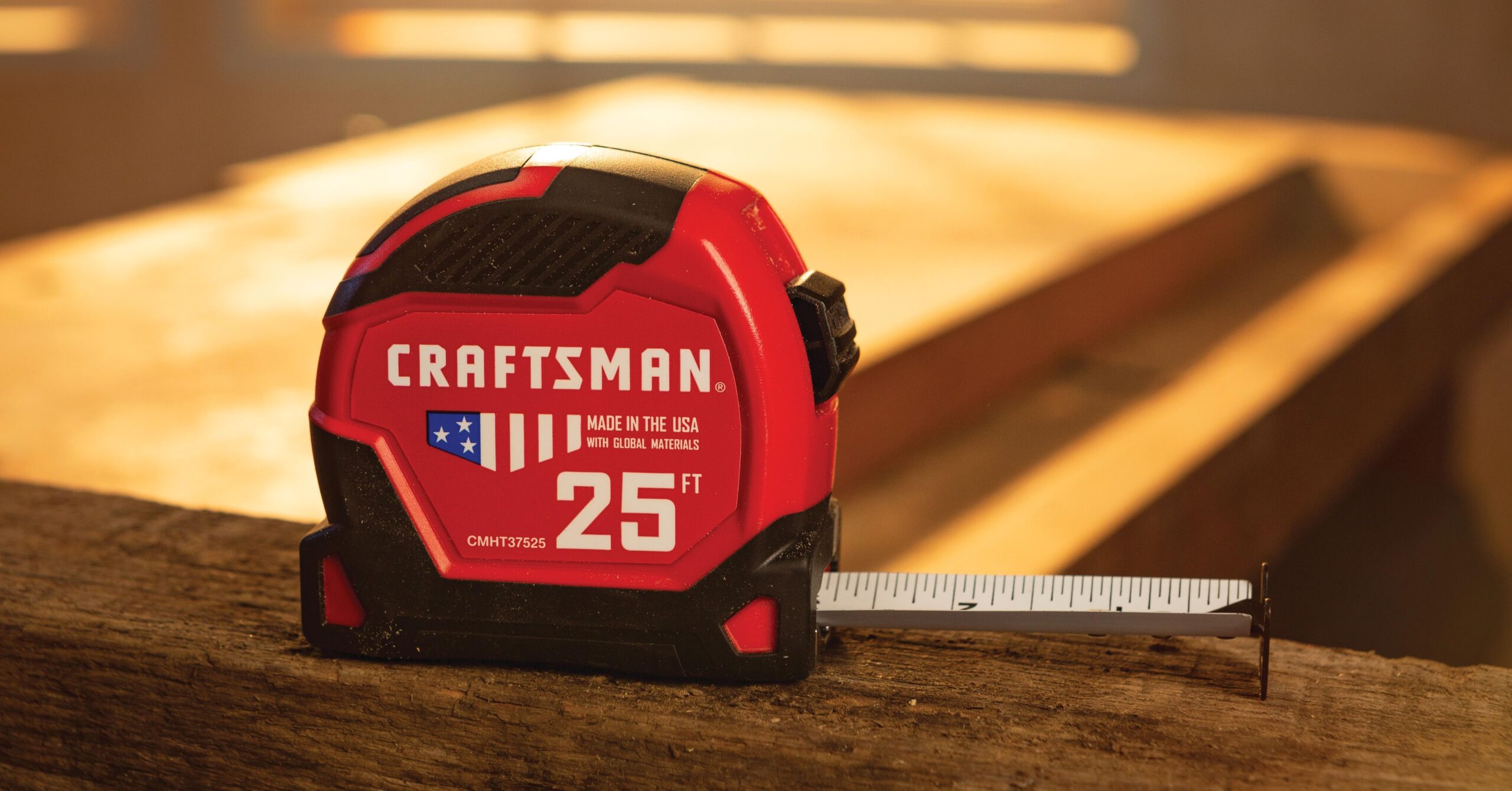
Understanding the Importance of Inspection Instruments in Property Assessments
Property assessments play a crucial role in determining the value and condition of real estate. Whether it is a residential, commercial, or industrial property, accurate assessments are essential for making informed decisions about buying, selling, or investing in real estate. To ensure accuracy and reliability in these assessments, various inspection instruments are employed.
One of the most commonly used inspection instruments is the moisture meter. This device is instrumental in detecting moisture levels within walls, floors, and ceilings. By measuring electrical resistance or capacitance changes caused by moisture content, inspectors can identify areas prone to leaks or water damage. This information not only helps assessors accurately evaluate the condition of a property but also aids potential buyers and sellers in making informed decisions.
Another vital instrument widely used during property inspections is the infrared camera. It enables inspectors to detect hidden issues such as heat loss or insulation deficiencies that may not be visible to the naked eye. By capturing thermal images that illustrate temperature variations within different materials and surfaces, infrared cameras provide valuable insights into energy efficiency and potential structural problems.
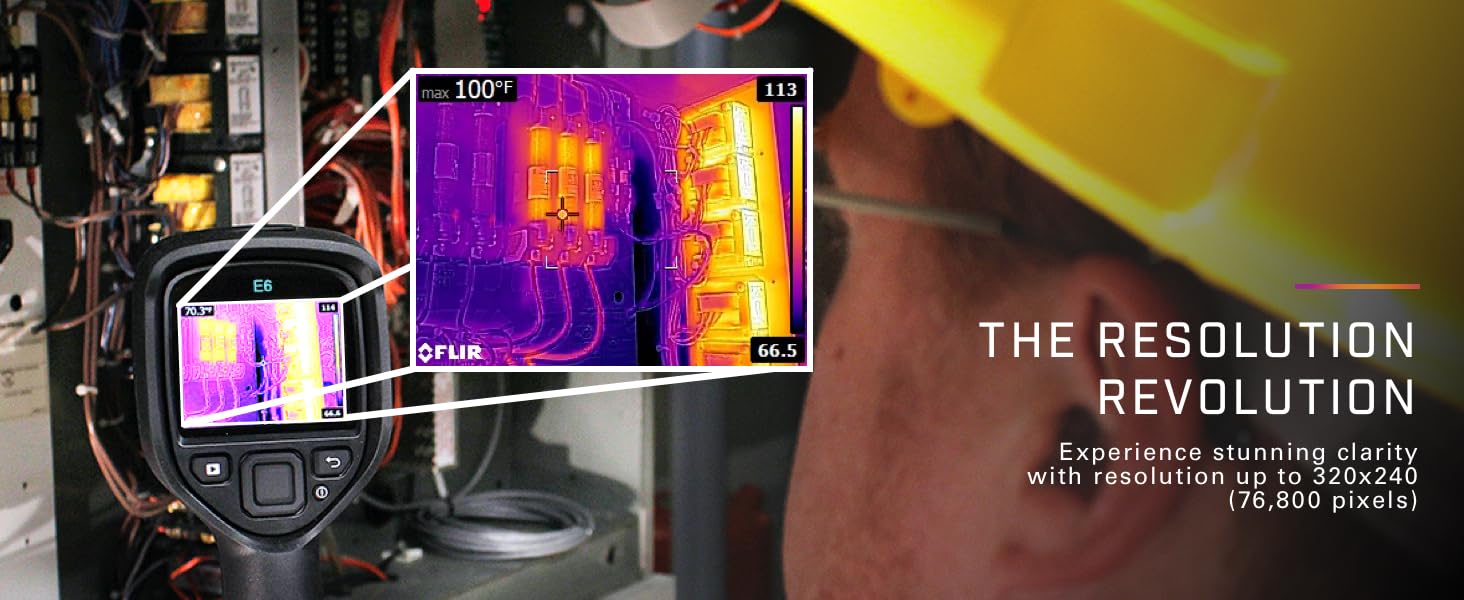
Furthermore, sound level meters are employed during property inspections to assess noise pollution levels both inside and outside buildings. Excessive noise can negatively impact inhabitants’ quality of life as well as affect property values. These devices help measure decibel levels emitted from nearby sources like highways or airports which may influence residents’ comfort and satisfaction.
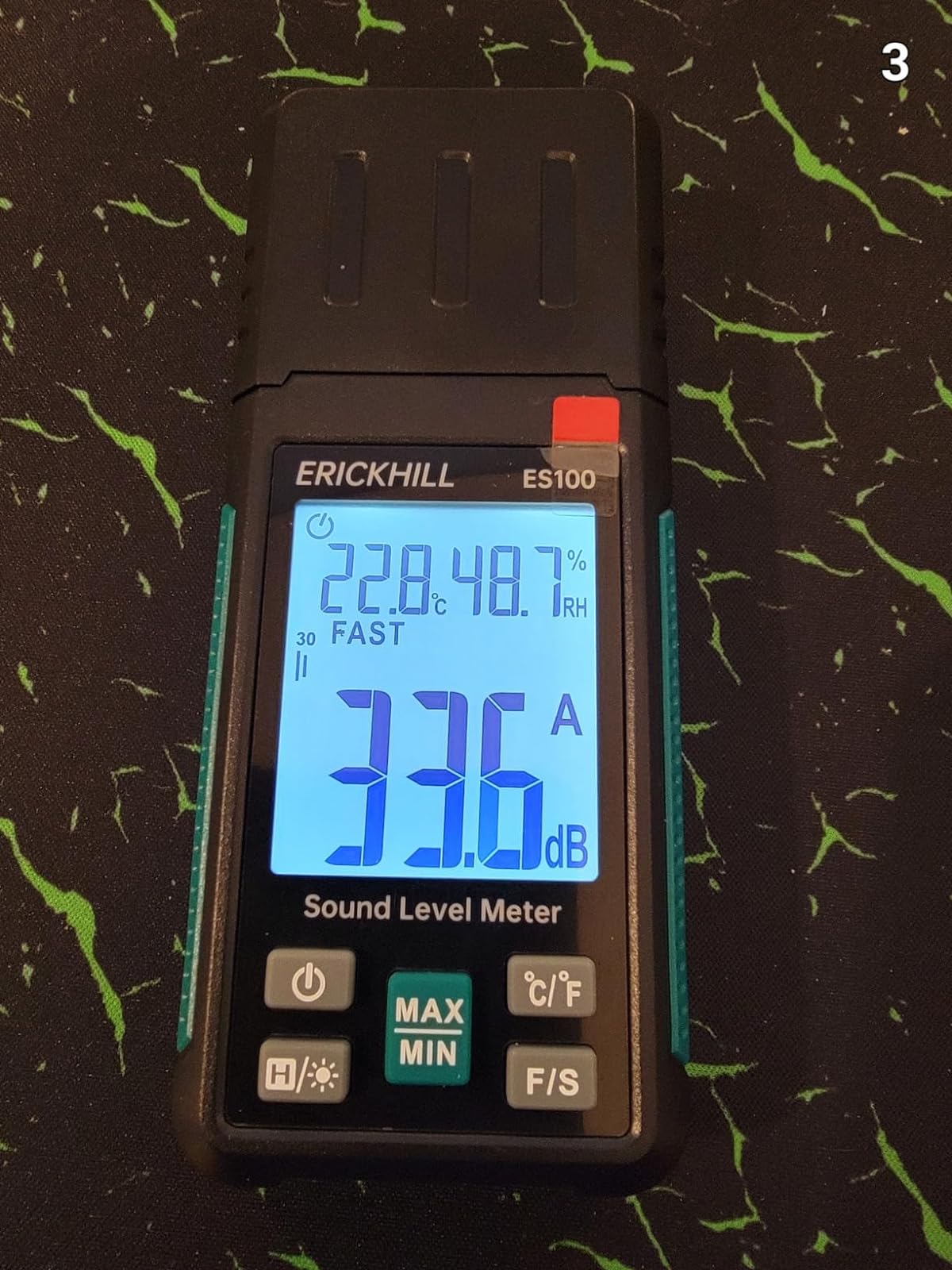
To ensure safety standards compliance during an inspection process, gas detectors come into play. These devices are utilized to identify hazardous gases such as carbon monoxide (CO) which could pose health risks if present at high concentrations indoors—particularly those emitted by faulty heating systems or appliances with poor ventilation.
In addition to gas detectors, radon monitors serve an equally important purpose when conducting property assessments. Radon—a naturally occurring radioactive gas released from soil—is known to cause lung cancer over prolonged exposure periods. Radon monitors help inspectors measure the concentration of radon gas, enabling property owners to take necessary steps for remediation.
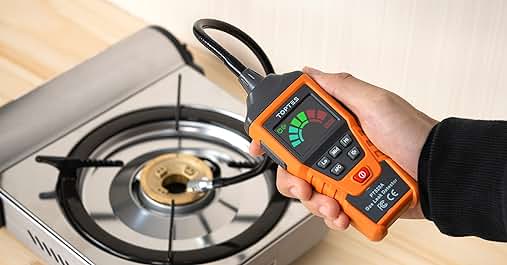
When assessing properties for potential buyers, structural integrity is a paramount concern. Thus, professionals use laser levels to accurately determine if structures such as walls or floors are level and plumb. These instruments project a straight laser line onto surfaces, allowing inspectors to assess whether any deviations exist from the ideal alignment.
Finally, electrical testers are crucial inspection instruments used to examine the safety and functionality of electrical systems within properties. They help identify issues like faulty wiring, improper grounding, or overloaded circuits that could pose serious hazards in residential or commercial buildings.
In conclusion, inspection instruments play an essential role in property assessments by providing accurate and reliable data regarding various aspects of real estate condition and value. From moisture meters detecting water damage potential to infrared cameras revealing hidden issues with energy efficiency or insulation deficiencies—these tools enable informed decision-making when buying or selling properties. Sound level meters help assess noise pollution levels while gas detectors and radon monitors ensure safety standards compliance and alert occupants about hazardous gases’ presence. Laser levels assist in evaluating structural integrity, whereas electrical testers identify potential electrical hazards within inspected properties.
By utilizing these inspection instruments appropriately during property assessments, industry professionals can provide clients with comprehensive information necessary for making well-informed decisions related to real estate transactions.
The Different Types of Inspection Instruments Used in Property Assessments
When conducting property assessments, it is crucial to have the right inspection instruments at your disposal. These tools are designed to provide accurate and detailed information about the condition of a property, allowing you to make informed decisions based on reliable data. In this section, we will explore the different types of inspection instruments commonly used in property assessments.
One of the most widely used inspection instruments in property assessments is the moisture meter. This handy tool measures moisture levels within building materials such as wood and drywall. By identifying areas with excessive moisture, inspectors can pinpoint potential issues like water damage or mold growth. Moisture meters come in various forms, including pin-type and pinless models. Pin-type meters use metal probes that penetrate into materials to measure moisture content accurately, while pinless meters use electromagnetic signals to assess moisture levels without damaging the material’s surface.

Another essential instrument for property assessments is a thermal imaging camera. This device detects variations in temperature by capturing infrared radiation emitted from objects. By translating these temperature differences into visible images known as thermograms, inspectors can identify hidden problems such as insulation gaps or electrical hotspots that may not be apparent to the naked eye. Thermal imaging cameras are particularly useful when inspecting roofs or HVAC systems where leaks or inefficiencies can go unnoticed but have significant consequences if left unaddressed.
A digital multimeter (DMM) is another valuable tool utilized during property assessments. DMMs measure various electrical parameters like voltage, current, and resistance. Inspectors employ these devices to test outlets, switches, circuits, and appliances for functionality and safety compliance standards. With their ability to diagnose electrical issues quickly and accurately troubleshoot faults or malfunctions, DMMs play a vital role in ensuring properties meet necessary electrical codes and regulations.
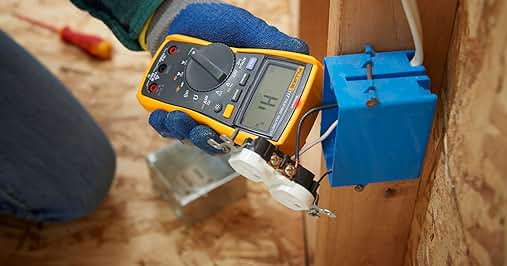
Furthermore, gas detectors are indispensable inspection instruments when assessing properties for gas leaks or harmful emissions such as carbon monoxide (CO). These portable devices sense and measure the concentration of specific gases in the air, alerting inspectors to potentially hazardous situations. Gas detectors are commonly used in areas where natural gas or propane is present, such as kitchens or utility rooms. By identifying gas leaks promptly, these instruments contribute to maintaining a safe environment for both occupants and property owners.
Lastly, we have the boroscope, an inspection instrument that allows inspectors to visually examine hard-to-reach or inaccessible areas. This flexible tool consists of a long tube with a light source and camera at one end, enabling visual inspections inside wall cavities, ductwork systems, or plumbing pipes without causing damage to the structure. Boroscopes provide valuable insights into hidden issues like water leaks, pest infestations, or structural deficiencies that might not be apparent during a surface-level assessment.
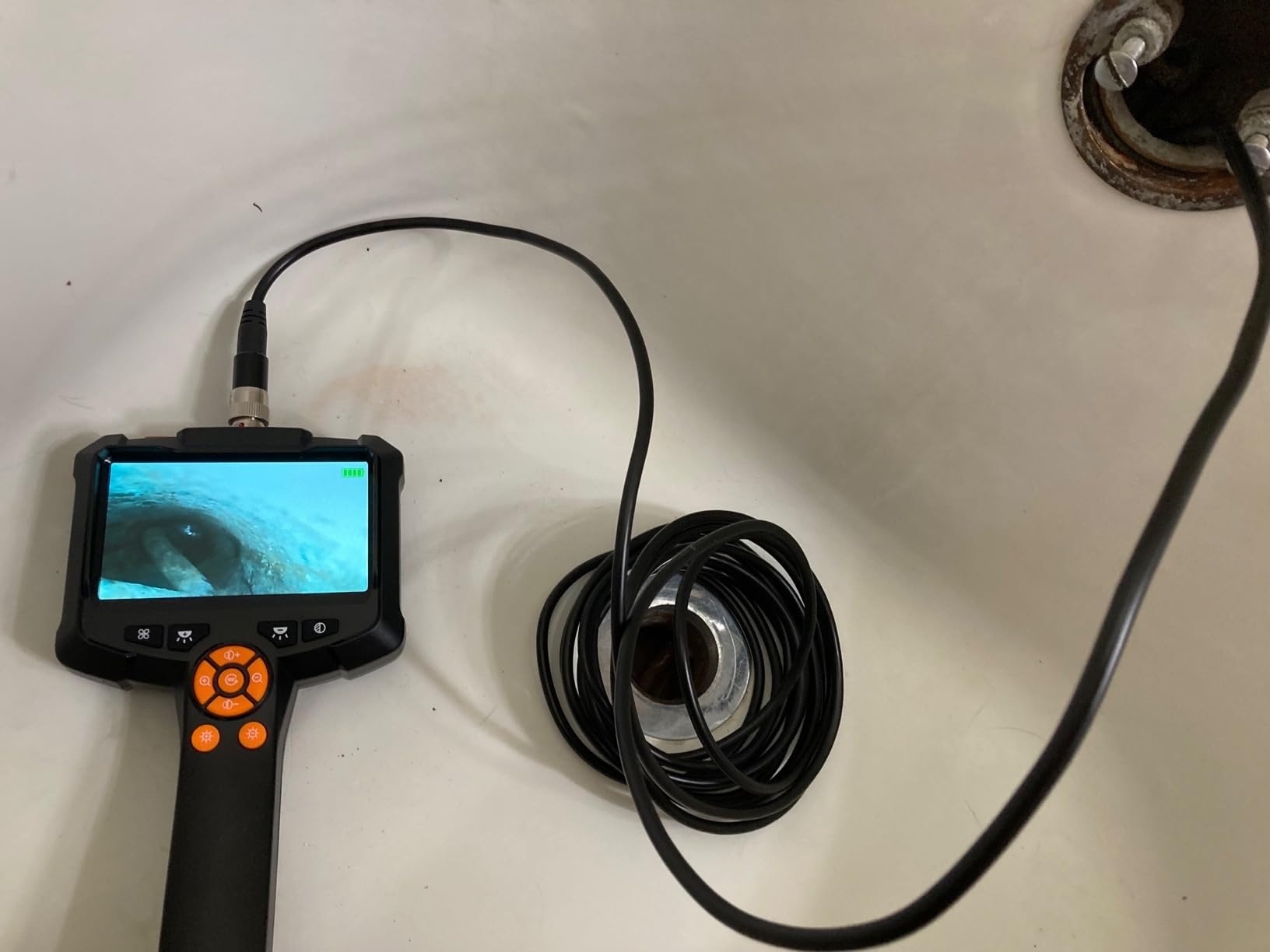
In conclusion, when conducting property assessments, having access to appropriate inspection instruments is essential for accurate data collection and analysis. Moisture meters help identify potential water damage or mold growth; thermal imaging cameras detect temperature variations highlighting hidden problems; digital multimeters ensure electrical safety compliance standards are met; gas detectors safeguard against harmful emissions; and boroscopes allow visual examination of otherwise inaccessible areas. Utilizing these different types of inspection instruments enhances the efficiency and effectiveness of property assessments by providing detailed information about various aspects related to a property’s condition.
How to Choose the Right Inspection Instruments for Your Property Assessment Needs
When it comes to conducting property assessments, choosing the right inspection instruments is crucial. These instruments play a vital role in identifying potential issues and ensuring that properties are safe and compliant with regulations. In this guide, we will discuss some factors to consider when selecting inspection instruments for your property assessment needs.
Firstly, it is important to determine the specific requirements of your property assessment. Different types of properties may have different needs when it comes to inspections. For example, if you are assessing a commercial building, you may need instruments that can detect gas leaks or check the integrity of electrical systems. On the other hand, if you are assessing a residential property, you may require tools for measuring moisture levels or inspecting plumbing systems.
Another factor to consider is the accuracy and reliability of the inspection instruments. It is essential that these tools provide accurate readings and reliable results in order to make informed decisions about a property’s condition. Look for instruments that have been calibrated by reputable manufacturers and have received positive reviews from professionals in the field.
Furthermore, consider the ease of use and portability of the inspection instruments. Property assessments often involve inspecting various areas within a property, including hard-to-reach places such as crawlspaces or attics. Therefore, having lightweight and portable instruments can greatly enhance efficiency during inspections.
In addition to ease of use, compatibility with other devices should also be considered. Many modern inspection tools now come with wireless connectivity options or USB ports which allow them to be connected to computers or smartphones for data analysis and storage purposes. This can be particularly useful when conducting large-scale assessments where multiple properties need to be inspected.
Cost is another important factor when choosing inspection instruments for property assessments. While it may be tempting to opt for cheaper options in an attempt to save money upfront, investing in high-quality tools can yield long-term benefits such as increased accuracy and durability – ultimately saving costs over time through more efficient inspections.
Before making any purchasing decisions, it is recommended to research and compare different inspection instruments on the market. Consider reading reviews from reputable sources, consulting with experts in the field, and attending trade shows or conferences where you can see and test various instruments firsthand.
Lastly, keep in mind that training is key when using inspection instruments effectively. Even the most advanced tools are of little use if they are not operated correctly. Make sure to provide adequate training for yourself or your team members who will be conducting property assessments to ensure proper usage of these tools.
In conclusion, choosing the right inspection instruments for property assessments requires careful consideration of specific requirements, accuracy and reliability, ease of use and portability, compatibility with other devices, cost-effectiveness, as well as adequate training. By selecting suitable instruments that align with your assessment needs and investing in quality tools, you can enhance the efficiency and effectiveness of property inspections while ensuring compliance with regulations – ultimately contributing to safer properties overall.
A Comprehensive Guide to Using Inspection Instruments for Accurate Property Assessments
Property assessments play a crucial role in determining the value and condition of a property. They provide valuable insights to potential buyers, sellers, and investors alike. To ensure accurate property assessments, professionals often rely on inspection instruments. These instruments are designed to assess various aspects of a property, such as structural integrity, moisture levels, electrical systems, and more. In this comprehensive guide, we will explore the different types of inspection instruments commonly used in property assessments.
One common type of inspection instrument is the thermal imaging camera. This device uses infrared technology to detect variations in temperature within a building’s structure. By identifying areas with abnormal heat or coolness patterns, inspectors can pinpoint potential issues such as insulation problems or water leaks hidden behind walls.
Another essential tool is the moisture meter. This handheld device measures moisture levels in materials like wood and drywall. Excessive moisture can indicate leaks or inadequate ventilation that may lead to mold growth or structural damage over time. By accurately measuring moisture content, inspectors can identify problem areas before they escalate into larger issues.
When it comes to assessing electrical systems, an electrical tester is indispensable. This instrument allows inspectors to measure voltage levels and check for faults in wiring connections without dismantling any components. It ensures that electrical systems are functioning correctly and adhering to safety standards.
To evaluate air quality inside a property, inspectors use air quality meters or gas detectors. These devices measure parameters such as carbon monoxide levels or humidity levels which can affect indoor comfort and health hazards if not properly regulated.
In addition to these specific instruments tailored for individual purposes mentioned above; there also exist multi-purpose tools known as diagnostic kits which combine several measurement functions into one device eliminating the need for multiple tools by providing reliable results across different applications ranging from HVAC inspections through leak detection up until energy audits – making them versatile companions during professional inspections.
While these inspection instruments are highly effective on their own; combining them with complementary tools can enhance the accuracy and efficiency of property assessments. For instance, pairing a thermal imaging camera with a moisture meter allows inspectors to identify both thermal anomalies and areas prone to moisture damage simultaneously. This comprehensive approach ensures that no potential issues go unnoticed during the assessment process.
It is worth noting that proficiency in using these inspection instruments requires proper training and knowledge. Professionals must understand how each instrument works, interpret their readings accurately, and be aware of any limitations or caveats associated with their usage. Additionally, regular calibration and maintenance are crucial for ensuring accurate results over time.
In conclusion, inspection instruments are invaluable assets in conducting accurate property assessments. From thermal imaging cameras to moisture meters and electrical testers, these tools provide essential insights into a property’s condition. By incorporating various instruments into their toolkit, professionals can evaluate multiple aspects of a property comprehensively. However, it is imperative that those employing these devices receive proper training to maximize their effectiveness while being mindful of potential limitations associated with their use.
Common Mistakes to Avoid When Using Inspection Instruments for Property Assessments
In property assessments, the use of inspection instruments is crucial for accurately evaluating the condition of a property. These instruments allow assessors to detect and measure various factors such as moisture levels, temperature variations, structural integrity, and more. However, despite their importance in providing reliable data, there are several common mistakes that people make when using inspection instruments for property assessments. In this section, we will discuss these mistakes and provide guidance on how to avoid them.
One common mistake that assessors often make is neglecting proper calibration of their inspection instruments. Calibration ensures that the instrument provides accurate readings by comparing its measurements against known reference values. Failing to calibrate an instrument can result in misleading data and consequently flawed assessments. Therefore, it is essential to regularly calibrate your inspection instruments according to manufacturer guidelines or industry standards.
Another mistake frequently made during property assessments is insufficient training on the proper use of inspection instruments. These tools are highly specialized and require specific knowledge and skills for effective utilization. Without adequate training, users may not understand the correct techniques or best practices associated with different types of equipment. This lack of expertise can lead to inaccurate readings or misinterpretation of data gathered during inspections. To mitigate this error, it is crucial for assessors to undergo comprehensive training programs provided by reputable institutions or manufacturers.
In addition to inadequate training, poor maintenance practices also contribute significantly to errors in property assessments using inspection instruments. Neglecting regular maintenance routines such as cleaning, lubricating moving parts, replacing worn-out components can compromise the functionality and accuracy of these tools over time. As a result, inspecting properties with poorly maintained devices increases the risk of unreliable readings which affects overall assessment quality negatively.
One major pitfall many assessors fall into when conducting property inspections is relying solely on one type of instrument instead of employing multiple complementary methods simultaneously within their evaluations.Inspection instruments have limitations in terms of what they can detect, and relying on a single instrument may overlook certain critical aspects. By using multiple instruments that complement each other’s capabilities, assessors can obtain more comprehensive data and achieve a more accurate assessment.
Furthermore, failing to consider environmental factors during inspections is another common mistake made by property assessors. Certain inspection instruments are sensitive to external conditions such as temperature, humidity, or electromagnetic interference. Ignoring these factors can affect the accuracy of readings and compromise the overall quality of assessments. Assessors should take into account such environmental variables while conducting property evaluations using inspection instruments.
Lastly, overlooking regular updates or advancements in inspection instrument technology is yet another error made by many assessors today.With constant improvements in technology and evolving industry standards,it is essential for professionals to stay up-to-date with the latest advancements.This ensures that their equipment remains efficient,reliable,and aligned with current best practices.Regularly reviewing manufacturer updates,discussing innovations within professional communities,and attending relevant conferences help prevent reliance on outdated tools or techniques.
In conclusion,following proper calibration protocols, investing in training programs,maintaining inspection instruments adequately utilizing complementary methods,staying attentive towards environmental variables,and keeping updated about technological advancements are all key strategies for avoiding common mistakes when employing inspection instruments for property assessments.By being vigilant about these potential pitfalls,property assessors can enhance the accuracy,reliability,and quality of their evaluations,resulting in improved decision-making processes related to properties’ condition and value.
The Role of Technology in Modern Inspection Instruments for Property Assessments
Property assessments play a crucial role in the real estate industry. They help determine the value and condition of a property, which is essential for buyers, sellers, and lenders alike. In recent years, technology has revolutionized the way property inspections are conducted. Modern inspection instruments have become invaluable tools for accurately assessing properties.
One significant advancement in inspection instruments is the use of drones or unmanned aerial vehicles (UAVs). These devices allow inspectors to capture high-quality aerial photographs and videos of properties from various angles. This not only provides a comprehensive view but also allows inspectors to identify potential issues that may be missed from ground-level inspections.
Another technological innovation is thermal imaging cameras. These cameras detect variations in temperature, allowing inspectors to identify hidden problems such as water leaks or insulation deficiencies without invasive testing. By detecting anomalies that are invisible to the naked eye, thermal imaging cameras provide valuable insights into a property’s condition.
Additionally, moisture meters have become indispensable tools for property assessments. These devices measure moisture content within walls or floors, helping inspectors identify areas prone to mold growth or structural damage caused by dampness. With accurate readings provided by moisture meters, inspectors can advise clients on necessary repairs or maintenance measures before these issues escalate further.
Furthermore, laser measuring devices have gained popularity among property assessors due to their accuracy and efficiency. These devices enable precise measurements of room dimensions and irregular spaces with ease. Laser measuring devices eliminate human errors associated with traditional measurement methods like tape measures while saving time during inspections.
When it comes to inspecting electrical systems within properties, multimeters are widely used inspection instruments today. Multimeters measure voltage levels and other electrical parameters ensuring that installations meet safety standards set by regulatory bodies such as National Electrical Code (NEC). Additionally multimeters can troubleshoot faults quickly reducing downtime during repair processes increasing overall efficiency of inspection.
In the age of smart homes, inspectors must also be equipped with tools to assess the complex systems within these properties. Smart home analyzers have become vital instruments for property assessments. These devices can identify and diagnose issues within a wide range of interconnected systems, including security, HVAC (Heating, Ventilation, and Air Conditioning), lighting controls, and energy management systems. With the rise in popularity of smart home technology, such analyzers are essential for understanding a property’s functionality comprehensively.
Lastly, video borescopes are instrumental in inspecting hard-to-reach areas like plumbing pipes or ductwork. These devices consist of a camera attached to a flexible tube that allows inspectors to visualize inaccessible spaces without causing damage. By enabling thorough inspections in confined areas, video borescopes ensure no potential issues go unnoticed during assessments.
In conclusion, technology has revolutionized the field of property assessments through modern inspection instruments. Drones provide aerial views for comprehensive inspections while thermal imaging cameras detect hidden problems related to temperature variations. Moisture meters accurately measure moisture content indicating potential mold growth or structural damage caused by dampness. Laser measuring devices offer precise measurements reducing human errors associated with traditional methods like tape measures. Multimeters ensure electrical safety standards are met while smart home analyzers help assess interconnected systems efficiently. Lastly, video borescopes allow inspections in inaccessible areas without causing damage. Incorporating these advanced inspection instruments ensures accurate and efficient property assessments benefiting both buyers and sellers in the real estate market today
Tips and Tricks for Maintaining and Calibrating Your Inspection Instruments
Property assessments are an essential part of ensuring the safety, functionality, and value of a property. Whether you are a home inspector or a property owner, having reliable inspection instruments is crucial to accurately assess the condition of a property. In this section, we will provide you with valuable tips and tricks for maintaining and calibrating your inspection instruments.
Firstly, it is important to understand that regular maintenance plays a significant role in keeping your inspection instruments in optimal working condition. Proper maintenance not only extends their lifespan but also ensures accurate readings during inspections. One key aspect of instrument maintenance is cleaning. Cleaning your inspection instruments regularly helps remove dust, debris, and any other contaminants that may affect their performance.
When cleaning your inspection instruments, make sure to use appropriate cleaning solutions recommended by the manufacturer. Avoid using harsh chemicals as they can damage sensitive components or affect calibration accuracy. Additionally, take extra care when handling delicate parts such as lenses or sensors to prevent scratches or breakage.
Apart from regular cleaning, another critical aspect of instrument maintenance is storage. Storing your inspection instruments properly prevents physical damage and keeps them protected from environmental factors such as extreme temperatures or humidity levels. Invest in high-quality protective cases specifically designed for storing these instruments safely.
Calibration is another vital step in maintaining reliable inspection instruments. Calibration ensures that your tools provide accurate measurements consistently over time. It involves comparing the readings obtained from an instrument against known reference values to determine if adjustments are needed.
To maintain calibration accuracy, it is recommended to perform routine checks on your inspection instruments before every use if possible; however, at least once every three months should be considered minimum frequency requirements.. These checks involve comparing measurements taken by the tool with certified standards or calibrated equipment.
In case you notice any discrepancies during these checks—such as inconsistent readings—it may indicate that recalibration is necessary. If so,, contact professional calibration services who specialize in the particular type of instrument you are using. These experts have the knowledge, skills, and equipment required to recalibrate your inspection instruments accurately.
Proper handling and usage techniques also contribute to the longevity and accuracy of your inspection instruments. Always refer to the user manual provided by the manufacturer for instructions on how to use each instrument correctly. Avoid subjecting them to excessive force or impacts that may lead to internal damage or misalignment.
Furthermore, it is crucial to protect your inspection instruments from extreme conditions during usage. For instance, exposure to direct sunlight or excessive heat can cause components such as LCD screens or batteries to malfunction or degrade over time.
In conclusion, maintaining and calibrating your inspection instruments is vital for accurate property assessments. Regular cleaning, proper storage, routine checks for calibration accuracy,, and appropriate handling techniques all contribute significantly towards ensuring optimal performance and reliability of these tools. By following these tips and tricks, you can ensure that your inspections are carried out with precision, giving you confidence in the results obtained from using reliable inspection instruments.
Key Factors to Consider When Investing in High-Quality Inspection Instruments
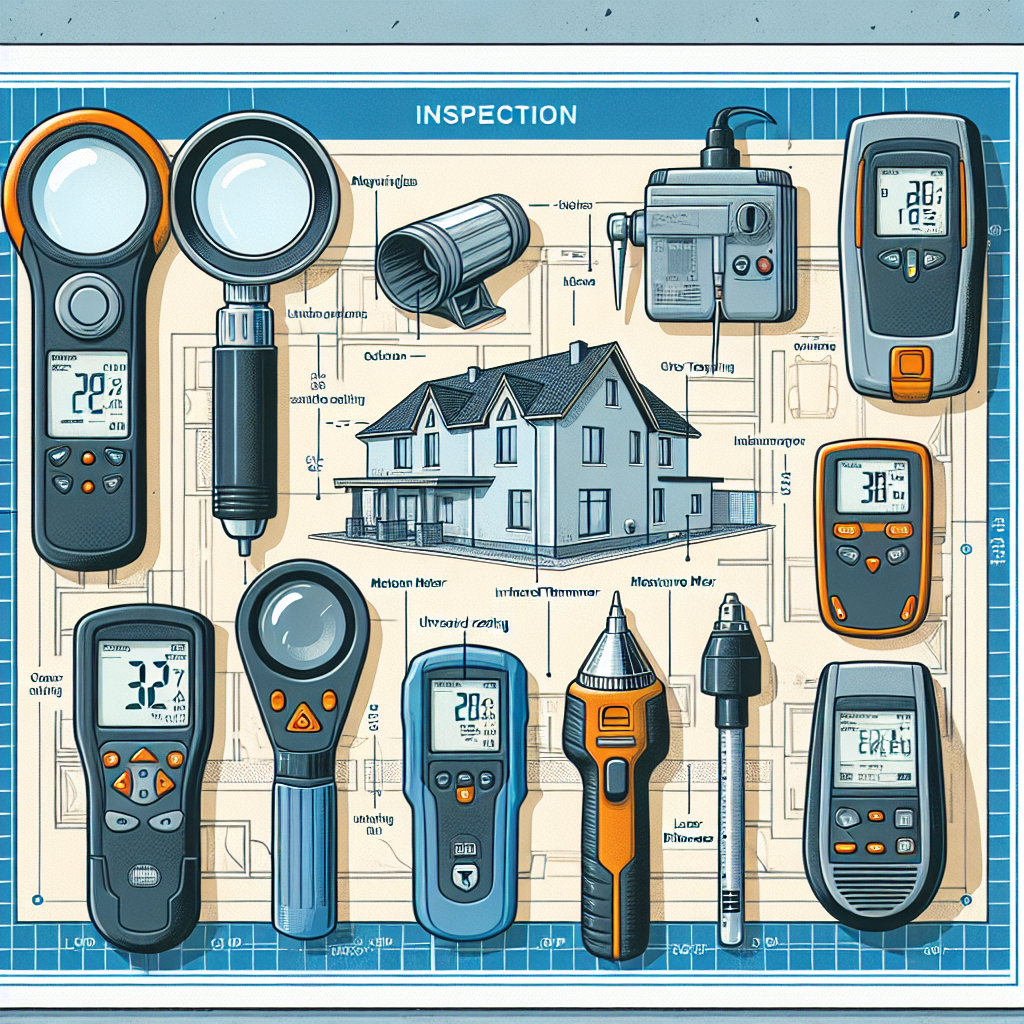
Inspection Instruments: A Guide for Property Assessments
When it comes to property assessments, investing in high-quality inspection instruments is crucial. These instruments play a vital role in accurately evaluating the condition of a property, identifying potential issues, and ensuring that the investment is sound. In this article, we will discuss key factors that should be considered when choosing inspection instruments.
One important factor to consider is the type of property being assessed. Different properties require different types of inspection instruments. For example, residential properties may require instruments such as moisture meters and thermal imaging cameras to detect hidden water damage or insulation issues. On the other hand, commercial properties might need more specialized equipment like air quality monitors or structural integrity testing devices.
Another essential consideration is the accuracy and reliability of the inspection instrument. Investing in high-quality instruments ensures that assessments are accurate and trustworthy. It’s important to choose instruments from reputable manufacturers with a track record of producing reliable products. Conducting research on customer reviews and ratings can also help determine which brands provide consistently accurate readings.
Durability is another critical factor when investing in inspection instruments for property assessments. These tools need to withstand frequent use and potentially harsh environments without losing their effectiveness or reliability over time. Choosing durable materials such as stainless steel or impact-resistant plastic can ensure that the instrument lasts longer and provides consistent results throughout its lifespan.
The ease of use should not be overlooked either when selecting inspection instruments for property assessments. User-friendly features like clear instructions, intuitive interfaces, and ergonomic designs can significantly enhance efficiency during inspections while reducing user fatigue and error rates.
Furthermore, compatibility with existing software systems should be considered before purchasing any inspection instrument for property assessment purposes. Integration capabilities allow inspectors to seamlessly transfer data from these devices into digital platforms used for generating reports or analyzing findings further simplifying post-inspection processes while minimizing human error associated with manual data entry.
Budget constraints are always an important consideration when making any purchase decision, including selecting inspection instruments. While it may be tempting to opt for cheaper options, compromising quality and accuracy in favor of cost savings can prove detrimental in the long run. It is essential to strike a balance between budget limitations and investing in high-quality instruments that will provide accurate results consistently.
Lastly, training and support should be factored into the decision-making process when purchasing inspection instruments for property assessments. Investing in equipment without proper training or ongoing technical support can lead to inefficiencies or even incorrect assessments. Look for manufacturers that offer comprehensive training programs or access to educational resources along with responsive customer support channels.
In conclusion, choosing high-quality inspection instruments is vital for accurate property assessments. Considerations such as the type of property being assessed, accuracy and reliability of the instrument, durability, ease of use, compatibility with existing systems, budget constraints, and available training/support are all key factors that should guide the selection process. By carefully evaluating these factors before making a purchase decision, property investors can ensure they have reliable tools at their disposal to conduct thorough inspections efficiently and confidently.
Exploring the Latest Innovations in Inspection Instruments for Efficient Property Assessments
Property assessments play a crucial role in determining the value, condition, and potential risks associated with a particular property. These assessments help individuals make informed decisions about buying or selling properties and also aid in ensuring compliance with safety regulations. Over the years, inspection instruments have undergone significant advancements to enhance efficiency and accuracy in property assessments. In this article, we will explore the latest innovations in inspection instruments that are revolutionizing property assessments.
One of the most notable innovations is the use of thermal imaging cameras. These cameras utilize infrared technology to detect temperature differences across surfaces, enabling inspectors to identify hidden issues such as water leaks or insulation problems. By visualizing these temperature variations on a screen, inspectors can pinpoint areas of concern without causing any damage to the property. This not only saves time but also reduces costs associated with invasive investigations.
Another groundbreaking innovation is the development of drones equipped with high-resolution cameras for aerial inspections. Drones provide an unprecedented vantage point by capturing detailed images and videos from above. This technology allows inspectors to assess roof conditions, chimney integrity, or other hard-to-reach areas more efficiently and safely than traditional methods like ladders or scaffolding. Moreover, drones offer real-time monitoring capabilities during large-scale projects where regular updates are essential for tracking progress accurately.
In addition to these technological advancements, portable gas detectors have become indispensable tools for identifying potential hazards during property inspections. These detectors measure concentrations of hazardous gases such as carbon monoxide or methane in the air quickly and accurately. Inspectors can rely on these devices to ensure safe living environments by detecting leaks early on and taking immediate corrective actions before any harm occurs.
Furthermore, moisture meters have seen significant improvements over recent years. These handheld devices allow inspectors to measure moisture levels within various materials such as wood or concrete easily. By identifying excessive moisture content promptly, inspectors can prevent mold growth and structural damages caused by prolonged exposure to dampness. This not only helps maintain the value of the property but also ensures a healthy living environment for its occupants.
Additionally, advancements in technology have led to the development of sophisticated software and data management systems that streamline property assessments. These digital tools enable inspectors to capture and organize inspection data efficiently, generate comprehensive reports, and track maintenance or repair activities over time. By digitizing these processes, property owners can easily access historical information about their properties and make informed decisions based on accurate data.
It is worth mentioning that while these innovations greatly enhance efficiency and accuracy in property assessments, they should not replace human expertise entirely. Experienced inspectors play a vital role in interpreting inspection results accurately and providing valuable insights beyond what instruments can detect. Inspection instruments should be viewed as valuable aids rather than complete substitutes for skilled professionals.
In conclusion, the latest innovations in inspection instruments are revolutionizing property assessments by increasing efficiency and accuracy. Thermal imaging cameras, drones equipped with high-resolution cameras, portable gas detectors, moisture meters, as well as advanced software and data management systems are transforming how inspections are conducted. These technological advancements offer numerous benefits such as cost savings, improved safety measures, enhanced decision-making capabilities for property owners or buyers alike. However beneficial these innovations may be it is important to remember that they complement rather than replace human expertise – ensuring a balance between technology and skilled professionals remains crucial for successful property assessments.
Best Practices for Conducting Thorough Inspections with Reliable Instrumentation
In the realm of property assessments, one cannot underestimate the importance of reliable inspection instruments. These tools play a crucial role in conducting thorough inspections and obtaining accurate data about a property’s condition. To ensure that your inspections are comprehensive and dependable, it is essential to follow best practices when using these instruments.
Firstly, it is imperative to select the appropriate inspection instruments for the task at hand. Each type of instrument has its strengths and limitations, so understanding their capabilities is vital. For instance, moisture meters are excellent for detecting water damage in buildings, while thermal imaging cameras can identify heat signatures indicative of insulation issues or electrical faults. By carefully considering which instrument will yield the most relevant information based on your specific assessment goals, you can optimize your inspection process.
Once you have chosen the suitable instrumentation, proper calibration is essential before commencing any inspections. Calibration ensures that an instrument provides accurate readings by comparing its output against a known reference value. Regular calibration prevents inaccurate measurements and maintains consistency across multiple properties or assessments over time.
Moreover, training plays a critical role in utilizing inspection instruments effectively. Even with advanced technology at our disposal today, inexperienced users may misinterpret data or fail to utilize an instrument’s full potential due to lack of knowledge or training. It is crucial to undergo comprehensive training programs provided by manufacturers or industry experts to understand how each device functions and how best to interpret results accurately.
During inspections themselves, adhering to consistent methodologies enhances reliability and repeatability of findings obtained through instrumentation use. Following established protocols ensures that every aspect of an assessment receives equal attention without overlooking any potential issues during evaluation.
Another vital factor in conducting thorough inspections involves documenting all measurements systematically throughout the assessment process comprehensively—using standardized forms specifically designed for each type of instrument used helps maintain organization and makes comparisons between different properties more manageable later on.
While inspecting a property with various instrumentation tools simultaneously might seem efficient, it is crucial to ensure that the instruments do not interfere with one another. Cross-contamination can occur when signals from different devices interact, leading to inaccurate readings or compromised data. Keeping adequate distances between tools and employing shielding techniques minimize interference and ensure accurate results.
Furthermore, regular maintenance of inspection instruments is paramount for their longevity and consistent performance. Instruments should be cleaned after each use to remove debris or residue that may affect measurements. Regular servicing by trained technicians guarantees that instruments are functioning optimally without any hidden defects that might compromise their accuracy.
Lastly, a comprehensive quality control process must be in place during inspections using instrumentation tools. This includes periodically retesting instruments against known reference standards and comparing results obtained by different users or at various times. By implementing quality control checks at different stages of an assessment, you can identify any inconsistencies early on and rectify them promptly to maintain reliable outcomes.
In conclusion, utilizing inspection instruments effectively requires adherence to best practices throughout the entire assessment process. Selecting suitable instrumentation based on specific goals, ensuring proper calibration, receiving thorough training, following established methodologies consistently, documenting findings systematically using standardized forms, preventing cross-contamination between devices through proper spacing and shielding techniques—all contribute towards conducting thorough inspections with reliable instrumentation. Additionally, regular instrument maintenance coupled with periodic quality control checks further enhances reliability while providing accurate assessments for property evaluations. By embracing these best practices diligently in your work as a property assessor or inspector ensures optimal results every time you conduct an inspection using these valuable tools.
Understanding the Limitations of Various Types of inspection instruments during property assessments
Property assessments are a crucial part of real estate transactions. Whether you are buying or selling a property, it is essential to have an accurate understanding of its condition. To accomplish this, inspectors often rely on various types of inspection instruments that aid in evaluating different aspects of the property. However, it is important to recognize and understand the limitations associated with these instruments.
One common type of inspection instrument used during property assessments is the moisture meter. Moisture meters measure the level of moisture present within building materials such as wood or drywall. They are particularly useful in identifying potential issues with water damage or leaks that may not be visible to the naked eye. However, it is vital to acknowledge that moisture meters can only provide information about surface-level moisture content and cannot determine if there are deeper underlying problems.
Thermal imaging cameras are another valuable tool utilized by inspectors during property assessments. These cameras detect variations in temperature across surfaces and create visual representations called thermograms. By analyzing thermograms, inspectors can identify areas where insulation may be lacking or where there could be air leaks. While thermal imaging cameras offer excellent insights into energy efficiency concerns, they do have their limitations as well.
It is crucial to remember that thermal imaging cameras detect temperature differences rather than actual sources of problems such as mold growth or electrical issues themselves. For example, a hot spot on a thermogram does not necessarily indicate an active electrical problem; rather, it signifies increased resistance at that specific point which may warrant further investigation.
Next on our list is the gas detector – an instrumental device when assessing properties for potential gas leaks or harmful air quality issues. Gas detectors use sensors to detect trace amounts of dangerous gases like carbon monoxide and natural gas in the air we breathe indoors—thus ensuring safety while conducting inspections inside enclosed spaces prone to hazardous conditions.
However, despite being invaluable tools for detecting potentially harmful substances in properties under assessment, gas detectors have limitations as well. These devices can only identify the presence of gases in the air but cannot pinpoint their exact source or concentration. Therefore, additional investigative measures are often necessary to determine the root cause and severity of any detected gas-related issues.
Lastly, let’s explore the limitations associated with electrical testers during property assessments. Electrical testers play a crucial role in assessing the safety and functionality of a property’s electrical system. They help inspectors identify faulty wiring, improperly installed fixtures, or other potential hazards related to electricity.
However, it is important to note that electrical testers can only assess visible aspects of an electrical system without physically altering it – they cannot inspect concealed wiring behind walls or within conduits unless specifically designed for that purpose. Additionally, while these instruments can detect some common issues like open grounds or reversed polarity, they may not uncover all underlying electrical problems that could be present.
Understanding the limitations of various types of inspection instruments used during property assessments is vital for both inspectors and clients alike. By recognizing what these tools can and cannot do, informed decisions regarding further investigations and necessary repairs can be made more effectively.
In conclusion, moisture meters provide valuable information about surface-level moisture content; thermal imaging cameras offer insights into energy efficiency concerns; gas detectors ensure safety by identifying harmful substances in indoor air quality, while electrical testers assist in evaluating an electrical system’s safety and functionality. However, it is essential to recognize that each instrument has its own set of limitations which need to be considered when conducting property assessments. Awareness of these limitations allows for more accurate evaluations and ensures that any underlying issues are thoroughly investigated before making decisions based on assessment results.
A Step-by-Step Guide to Conducting a Successful Property Assessment with Inspection Tools
Property assessments are an essential part of the real estate industry. Whether you are a buyer, seller, or property manager, it is crucial to have a comprehensive understanding of the condition and value of a property before making any decisions. One effective way to conduct these assessments is by utilizing inspection instruments. These tools can provide valuable insights into the various aspects of a property’s structure, systems, and overall functionality.
When embarking on a property assessment journey, it is important to follow certain steps in order to ensure success. This step-by-step guide will outline how to effectively use inspection instruments during your assessment process.
Step 1: Prepare Your Tools
Before starting any assessment activities, make sure you have all the necessary inspection instruments readily available. Common examples include moisture meters, thermal imaging cameras, electrical testers, gas detectors, and digital multimeters. These tools serve different purposes and can help identify potential issues that may not be visible to the naked eye.
Step 2: Begin with Visual Inspection
Once equipped with your inspection instruments, start by conducting a visual inspection of the property. Walk around both the interior and exterior areas while closely examining every detail. Look out for signs of water damage or leaks on ceilings and walls as well as cracks or deterioration in building materials such as wood or concrete.
Step 3: Use Moisture Meters
Moisture meters are invaluable when assessing potential water-related issues within a property. By measuring moisture levels in building materials like drywall or flooring surfaces, these instruments can detect hidden leaks that could lead to structural damage if left unaddressed.
Step 4: Utilize Thermal Imaging Cameras
Thermal imaging cameras are excellent tools for identifying energy inefficiencies within properties due to poor insulation or air leakage problems. By detecting temperature differences between surfaces using infrared technology, these cameras can pinpoint areas where energy loss occurs which helps prioritize repairs or upgrades accordingly.
Step 5: Employ Electrical Testers
Electrical testers are essential for evaluating the safety and functionality of a property’s electrical systems. They can detect faulty wiring, ground faults, or other potential hazards that may put occupants at risk. Regularly using electrical testers during property assessments is crucial to ensure compliance with safety standards.
Step 6: Consider Gas Detectors
Gas leaks pose serious health risks and should never be overlooked during property assessments. Utilizing gas detectors can identify the presence of dangerous gases like carbon monoxide or natural gas, alerting you to potential problems and allowing for prompt corrective action.
Step 7: Measure with Digital Multimeters
Digital multimeters are versatile inspection instruments used to measure voltage, current, and resistance in electrical circuits. These devices help assess the functionality of various electrical components within a property, such as outlets or lighting fixtures. By checking these parameters, you can identify any malfunctions that require repair or replacement.
In conclusion, inspection instruments play a pivotal role in conducting successful property assessments by providing valuable insights into a property’s condition and functionality. Following this step-by-step guide will enable you to effectively utilize these tools throughout your assessment process. Remember always to prepare your tools before starting any inspections and conduct thorough visual inspections alongside specialized measurements using moisture meters, thermal imaging cameras, electrical testers, gas detectors, and digital multimeters accordingly. By doing so, you will gain an accurate understanding of a property’s strengths as well as areas that may require attention before making informed decisions regarding its value or suitability for investment purposes
How inspection instruments enhance accuracy and efficiency during property assessments?
In the world of property assessments, accuracy and efficiency are of utmost importance. The ability to accurately evaluate a property’s condition is essential in determining its value and making informed decisions about its maintenance or potential purchase. To achieve this, inspectors rely on various inspection instruments that enhance their capabilities during assessments.
One such instrument that greatly enhances accuracy is the thermal imaging camera. This device detects variations in temperature and creates detailed images called thermograms. By using a thermal imaging camera, inspectors can identify areas of heat loss or gain, which can indicate insulation deficiencies or air leakage. This information is crucial for identifying energy inefficiencies within a property and recommending necessary improvements.
Additionally, moisture meters play a significant role in ensuring accurate property assessments. These handheld devices measure the level of moisture present in different materials such as wood or drywall. Excessive moisture can lead to mold growth and structural damage over time, so detecting it early on is vital. Moisture meters provide inspectors with objective data regarding moisture levels within a property, enabling them to pinpoint problem areas and recommend appropriate remediation measures.
Furthermore, digital multimeters are essential tools for assessing electrical systems during property inspections. They measure voltage levels, current flow, resistance, and continuity within circuits. Inspectors use these readings to determine if electrical systems meet safety standards or require repairs or upgrades. Digital multimeters not only enhance accuracy but also contribute to overall efficiency by allowing inspectors to quickly assess multiple aspects of an electrical system without needing separate instruments for each measurement.
Another invaluable instrument used by property inspectors is the gas detector. Gas leaks pose serious risks such as fire hazards or health problems from inhaling toxic fumes like carbon monoxide gas (CO). Gas detectors monitor air quality by measuring the concentration of specific gases present in the environment surrounding a property inspection site – be it natural gas leaks from pipes or CO emissions from faulty heating systems – alerting inspectors to potential dangers and ensuring the safety of occupants.
Moreover, specialized instruments like sound level meters are employed during property assessments to evaluate noise levels. Excessive noise can be detrimental to both the comfort and health of residents, so it is important for inspectors to identify sources and levels of unwanted noise. Sound level meters measure sound pressure levels in decibels (dB) allowing inspectors to assess whether a property complies with local noise regulations.
In conclusion, inspection instruments greatly enhance accuracy and efficiency during property assessments. Thermal imaging cameras enable inspectors to detect energy inefficiencies, moisture meters help identify water damage risks, digital multimeters provide comprehensive electrical system evaluations, gas detectors ensure occupant safety by detecting leaks or emissions, and sound level meters assess noise pollution. By utilizing these instruments effectively, property inspectors can gather objective data that enables them to make informed decisions regarding a property’s condition and value.
Exploring Emerging Trends and Future Developments in inspection instruments used for property assessments
In the ever-evolving field of property assessments, inspection instruments play a vital role in providing accurate and detailed information. These instruments are designed to assist professionals in evaluating the condition of properties, identifying potential risks or hazards, and making informed decisions regarding their valuation. As technology continues to advance at an unprecedented pace, it is essential to explore emerging trends and future developments in inspection instruments.
One of the most prominent emerging trends in inspection instruments is the integration of artificial intelligence (AI) capabilities. AI-powered inspection tools can analyze vast amounts of data quickly and accurately, reducing human error and increasing efficiency. For example, image recognition software can be used to identify structural defects or signs of deterioration from photographs taken during inspections.
Another promising development is the use of drones for property assessments. Drones equipped with high-resolution cameras allow inspectors to capture aerial images that were previously inaccessible without costly resources such as helicopters or scaffolding. These images provide a comprehensive overview of a property’s condition and enable inspectors to detect issues that may not be visible from ground level.
Furthermore, advances in remote sensing technologies have opened up new possibilities for inspecting properties non-invasively. Thermal imaging cameras are increasingly being used to detect insulation problems or hidden water leaks by detecting temperature variations on building surfaces. This allows inspectors to identify energy inefficiencies or potential sources of moisture damage without causing any disruption to occupants.
Alongside technological advancements, there has been a growing emphasis on sustainability and environmental impact within the property assessment industry. Inspection instruments now aim not only to assess current conditions but also contribute towards sustainable practices through features such as energy audits or carbon footprint calculations.
For instance, handheld devices capable of measuring indoor air quality parameters have become more prevalent as awareness about healthy living environments increases. Inspectors can utilize these devices during assessments to evaluate factors like temperature, humidity levels, volatile organic compounds (VOCs), and carbon dioxide concentrations. This information helps identify potential health hazards and supports recommendations for improvements.
Another area of development is the integration of augmented reality (AR) in inspection instruments. AR technology allows inspectors to overlay virtual data onto real-world images, enhancing their understanding and interpretation of a property’s condition. For example, using AR glasses or smartphone applications, an inspector can visualize hidden structures within walls or see a rendered representation of what a renovated space could look like.
As inspection instruments continue to evolve, it is crucial for professionals in the field to adapt and stay updated on these emerging trends. By embracing new technologies and techniques, property assessors can enhance their capabilities and provide more accurate assessments that align with industry standards.
In conclusion, emerging trends in inspection instruments are transforming the landscape of property assessments. AI-powered tools, drones, remote sensing technologies, sustainability features such as energy audits and carbon footprint calculations, indoor air quality measurements devices, and augmented reality applications are just some examples of future developments that promise to revolutionize this field. As advancements continue to unfold rapidly, professionals must embrace these changes to remain at the forefront of their profession. By doing so, they will be able to deliver comprehensive property assessments that meet evolving demands while ensuring accuracy and efficiency throughout the process.
Inspection instrument safety measures: Protecting yourself while performing property assessments
Inspection instruments are essential tools used in property assessments to evaluate the condition of a building or structure. These instruments allow inspectors to identify any potential issues and provide accurate reports for property owners and buyers. However, it is crucial for inspectors to prioritize safety measures while using these instruments. This article will discuss the importance of inspection instrument safety measures and provide guidance on protecting oneself during property assessments.
Firstly, it is vital to ensure that all inspection instruments are properly calibrated and in good working condition before use. Regular maintenance and calibration checks should be performed to guarantee accurate readings during inspections. Inspectors must also familiarize themselves with each instrument’s user manual, including its limitations and potential risks.
When handling inspection instruments, protective gear should always be worn to minimize exposure to hazardous substances or materials. For instance, gloves can protect against sharp objects or chemicals that may be present during the assessment process. Safety goggles are essential when dealing with dusty environments or potentially harmful airborne particles.
Another critical aspect of inspection instrument safety is adhering to proper handling techniques while performing assessments. Instruments should be handled with care, avoiding any unnecessary force or rough handling that may damage their delicate components. It is also crucial not to exceed the recommended operating limits specified by manufacturers as this can compromise both accuracy and safety.
Furthermore, inspectors must pay close attention when accessing hard-to-reach areas during inspections – especially those at heights or confined spaces – where accidents can easily occur if not cautious enough. In such instances, utilizing appropriate personal protective equipment (PPE) like harnesses or respiratory masks becomes imperative.

In addition to PPE usage, maintaining a clutter-free work environment helps prevent accidents related to tripping hazards associated with cables from inspection devices or other obstacles on site premises obstructing safe navigation within confined areas.
Inspectors should also prioritize electrical safety when using certain types of instrumentation such as thermographic cameras which require connecting them directly into an electrical system for data collection purposes; ensuring proper grounding and insulation of equipment used in these situations is crucial to avoid electric shocks or short-circuits.
Lastly, taking breaks and managing fatigue during lengthy inspection sessions is essential for personal safety. Mental and physical exhaustion can impair judgment, increasing the risk of accidents or mistakes. Inspectors should plan their assessments accordingly, allowing adequate time for rest and recovery between inspections to maintain optimal alertness levels.
In conclusion, incorporating safety measures into property assessments involving inspection instruments is paramount to protecting oneself while performing inspections. Regular instrument maintenance, wearing appropriate protective gear, adhering to proper handling techniques, utilizing PPE as required by the assessment environment or situation encountered are all vital practices that inspectors must prioritize. Additionally, ensuring electrical safety precautions are observed when using specific instrumentation and managing fatigue effectively play a significant role in minimizing risks during property assessments. By following these guidelines diligently throughout the inspection process, inspectors can carry out their tasks safely and efficiently while providing accurate evaluations of properties to clients.In conclusion, “Inspection Instruments: A Guide for Property Assessments” is a valuable resource that provides comprehensive information on the various instruments used in property inspections. It offers guidance and insights into the selection, usage, and interpretation of these instruments, enabling property assessors to conduct thorough assessments with accuracy and efficiency. This guide serves as a reliable reference for professionals involved in property inspections and contributes to ensuring the integrity of assessment processes.
